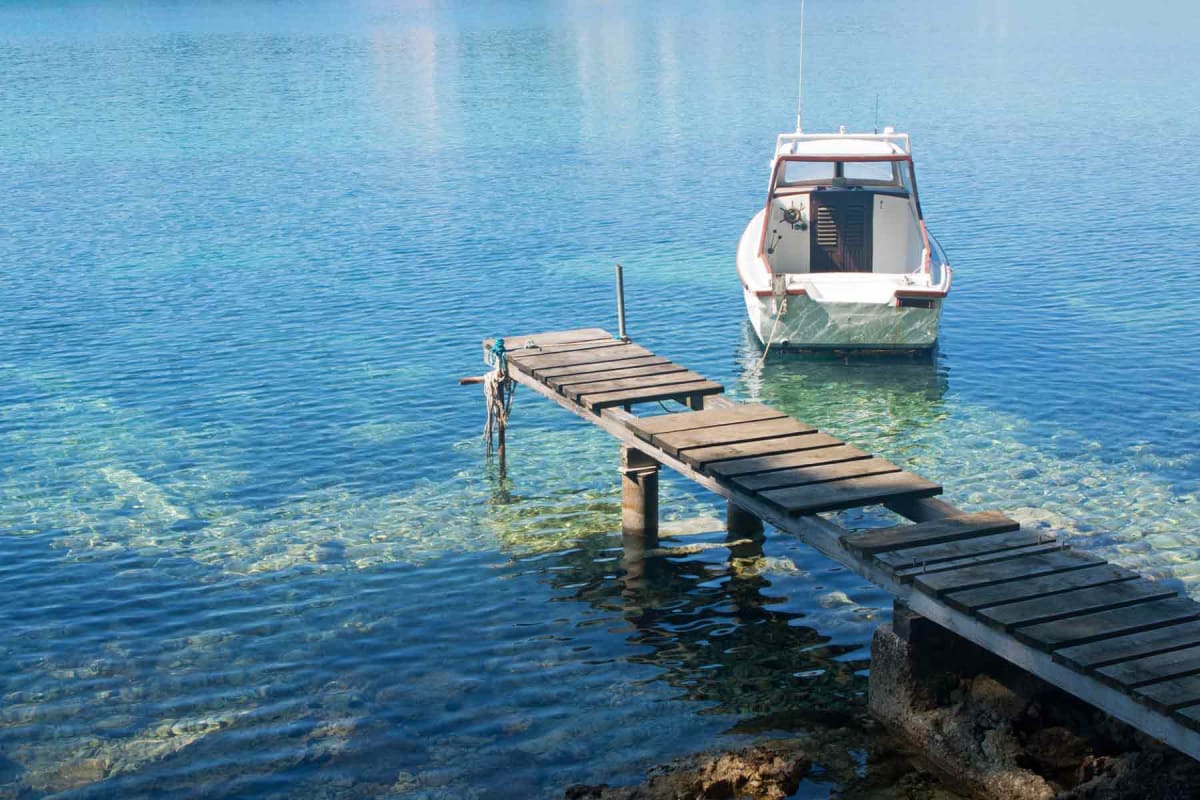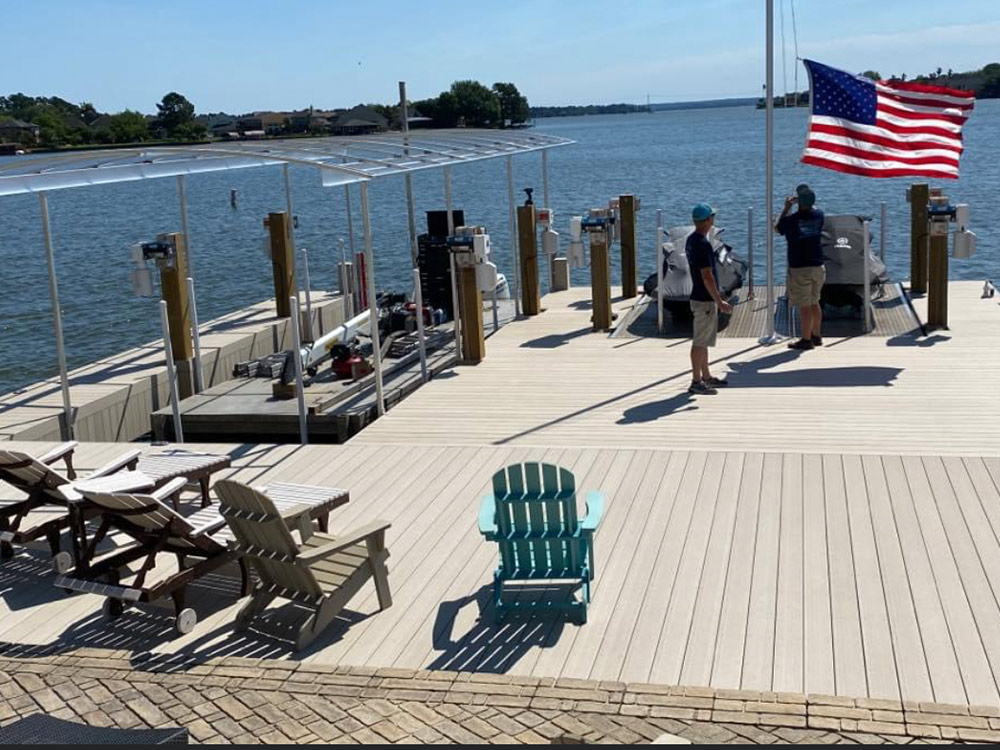Effective Dock Fixing Techniques: Ensuring Architectural Stability
Guaranteeing the structural integrity of docks with effective fixing strategies is extremely important for the longevity and safety and security of aquatic facilities. Ultimately, selecting the best repair service products, such as corrosion-resistant alloys and composite materials, is essential for sturdiness.
Examining Dock Damage
Evaluating dock damage is an essential first step in guaranteeing the architectural integrity and safety of any type of docking facility. Secret elements to examine consist of the dock's structure, pilings, outdoor decking, and equipment (Dock Repairs).
Architectural designers or certified inspectors typically do these evaluations utilizing specialized methods and devices. For example, undersea examinations may use finder devices or remotely operated vehicles (ROVs) to spot immersed damage. Over water, aesthetic evaluations are complemented by utilizing wetness meters and other analysis devices to reveal underlying problems not right away visible to the naked eye.

Picking Repair Service Materials
Selecting the proper repair service products is a crucial action in the dock restoration process, one that directly affects the longevity and performance of the repaired structure. Material option need to be driven by elements such as environmental conditions, load-bearing demands, and compatibility with existing dock elements. As an example, wood is a standard selection for docks because of its all-natural strength and visual appeal. Selecting the best type of wood, such as pressure-treated lumber or naturally rot-resistant types like cedar or teak, is essential to withstand water atmospheres.
In enhancement to wood, composite products are progressively prominent due to their longevity and low maintenance demands. Compounds, typically made from a mix of plastic and wood fibers, provide exceptional resistance to rot, pests, and UV damage. For steel docks, choosing corrosion-resistant alloys such as galvanized steel or marine-grade aluminum is necessary to stop rust and make sure architectural stability in saline water problems.
Epoxy materials and marine-grade sealants are essential for fixing fractures and securing joints, offering a waterproof obstacle and enhancing the dock's general stamina. By meticulously picking high-grade materials, dock repairs can achieve resilient outcomes, thus safeguarding against future destruction and making sure safe, reliable use.
Structural Support Strategies
Effective structural support methods are crucial in making sure the stability and longevity of dock repairs. One fundamental approach includes using steel or composite support bars (rebar) within concrete structures. Rebar supplies additional tensile stamina, avoiding splits and distributing tons a lot more evenly. This method is specifically efficient for anchors subjected to heavy lots or severe ecological problems.
Another vital method is the application of fiber-reinforced polymers (FRP) These materials offer high strength-to-weight ratios and excellent resistance to deterioration, making them optimal for strengthening concrete continue reading this or wooden anchors. FRP can be applied in strips or sheets and bonded with epoxy materials to improve architectural stability.
Supporting and anchoring systems likewise play an important role in structural support. Cross-bracing, utilizing metal or wooden light beams, can neutralize lateral pressures, lowering persuading and activity. Anchoring systems, such as helical piers or driven piles, supply a steady foundation by transferring loads to deeper, extra steady dirt layers.
Last but not least, the assimilation of load-distribution plates can aid distribute weight more evenly across the dock's surface area, minimizing localized stress points. These techniques collectively make sure that docks continue to be secure and robust, with the ability of holding up against the roughness of their functional environment.
Advanced Repair Work Techniques

Another innovative strategy includes underwater welding, which enables repair work to be carried out without the need to dewater the area. This approach is specifically beneficial for dealing with structural concerns in submerged dock components, guaranteeing minimal disruption to procedures. Enhanced welding strategies, combined with robot systems, supply accuracy and dependability, consequently extending the life expectancy of the dock.
In addition, cathodic protection systems are implemented to stop corrosion in metal dock structures. By using sacrificial anodes or satisfied current systems, these strategies properly alleviate the electrochemical procedures that lead to product degeneration.
Finally, progressed monitoring technologies, such as architectural get redirected here health and wellness monitoring (SHM) systems, give real-time data on the problem of dock structures. These systems allow aggressive maintenance and prompt interventions, inevitably guaranteeing the long-term structural integrity of the dock.
Upkeep and Avoidance
Upkeep and avoidance are fundamental ideas that underpin the longevity and security of dock frameworks. Regular evaluations are vital, permitting early discovery of damage, prospective weaknesses, and environmental impacts. A positive strategy, entailing routine look for rust, rot, and architectural changes, reduces expensive repair work and prolongs the dock's functional life.
Safety nets ought to consist of applying safety coverings to metal components to safeguard versus rust and making use of treated wood to stand up to decay. In addition, making sure proper water drainage and ventilation can stop water build-up, which is a common reason for structural degradation. Incorporating high quality products and sticking to supplier standards throughout construction and repair stages additionally play important duties in enhancing longevity.

Educating workers in dock upkeep finest methods makes certain constant application of safety nets. Leveraging technological advances, such as drones for examinations and sensing units for real-time tracking, can even more enhance upkeep efforts. By focusing on maintenance and prevention, dock proprietors can guarantee architectural honesty, functional safety and security, and cost-efficient administration over the dock's life-span.
Final Thought
In conclusion, maintaining the structural integrity of marine centers requires comprehensive dock fixing methods. Advanced repair methods, combined with regular upkeep practices, guarantee the dock remains functional and risk-free under diverse environmental problems.
Guaranteeing the structural integrity of docks through reliable repair work techniques is extremely important for the long life and security of marine facilities.Selecting the appropriate repair work materials navigate to this site is a critical action in the dock restoration process, one that directly influences the durability and performance of the fixed framework.Effective architectural reinforcement techniques are essential in guaranteeing the stability and durability of dock repair work. By focusing on maintenance and prevention, dock proprietors can make certain structural stability, operational security, and cost-effective management over the dock's lifespan.
In final thought, keeping the structural honesty of marine centers necessitates detailed dock fixing methods.
Comments on “The Importance of Timely Dock Repairs for Beachfront Security”